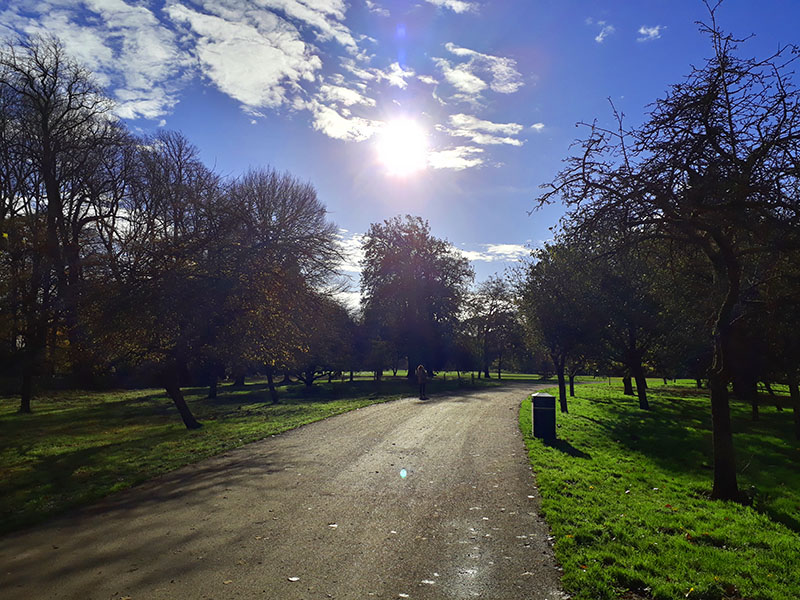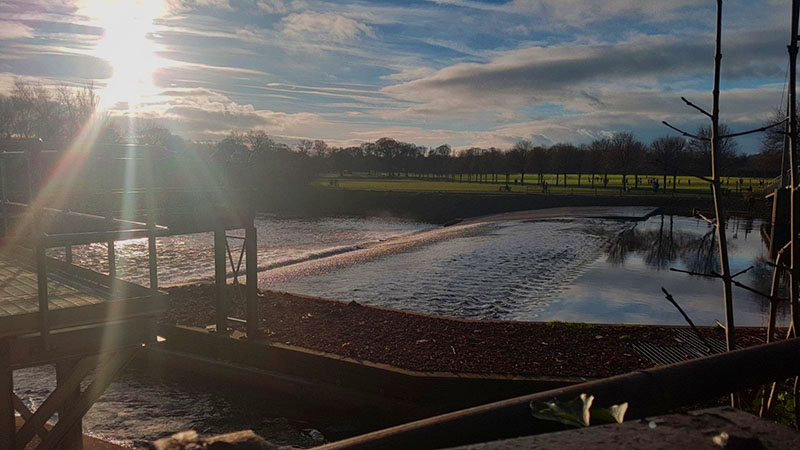Over 2m people visit Bute Park every year but how many know its story? Find out how Bute Park has evolved over the years

On sunny days its easy to see how the park receives so many visitors
It’s a windy and wet day, but it hasn’t deterred people from visiting Bute Park. Two dogs aren’t put off by the weather. Chasing each other they run several rings around one particularly gnarly tree. Its bark weathered by the years. What could such a venerable tree tell us about the history it has seen? Do people ever consider the legacy a tree has in such a historic park?
One dog cocks its leg on the tree to relieve itself, making it clear that it has no thoughts on the matter…
The park received a £3.1m grant from the Heritage Lottery Fund for restoration in 2009. With the intention by the council to maintain the park as a flagship city park. According to the Bute Park Management and Maintenance Plan there were a recorded 2,043,966 visitors to the park in 2014.
Only a few of those visitors will know the park’s story, but strategy and development manager for parks services Rosie James says, “There is certainly an interest in the story of the park, but it is still an evolving story.”
The history of Bute Park seems particularly pertinent, back in 1947 the park was given to the public (70 years ago). Furthermore, on November 25 the park celebrated the new Charter for Trees, Woods and People, a document that looks to protect trees and their future. With Bute Park being given one of the Charter Legacy Poles to place in the park.
“There is only one thing to be regretted about Cardiff Castle and the gardens, and that is their closeness to the town of Cardiff.”
However, the new charter has significant inspiration from history itself. It has been 800 years the original Charter of the Forest was issued by King Henry III. After the Norman invasion of Britain the woods were property of the crown, reserved for hunting by the King. There were severe penalties for any commoner who used the woods. But the Charter for the Forest changed this by acknowledging the rights of access to free men in England.
This may seem distant today, but consider some parallels. Recently some locals had to fight for Britannia and Waterfront Parks to remain undeveloped by a corporation at Cardiff Bay. To this day access to woods and parklands remains an issue.
From 1960 to 2017, Cardiff park captured on film (above)
The Scots invade Cardiff
Bute Park’s recent history, unsurprisingly, is intertwined with that of the Bute family. Descendants of King Robert II of Scotland and sheriffs of the historic county of Bute.
How did a Scottish family become patrons of Cardiff? Jon Stuart the 4th Earl of Bute married the heiress of the Viscount of Windsor gaining him estates in South Wales. In 1876 he was given a peerage as Baron of Cardiff, becoming the first Marquess of Bute.
Previously the site of two farms, it was the 3rd Marquess of Bute who pursued the park’s creation. The Journal of Horticulture and Cottage Gardener, 1877 has this to say, “No lord ever entered the castle who did more, or was inclined to do more than the present noble proprietor, and it would be difficult to find one better able to carry out improvements than Mr Pettigrew.”
Andrew Pettigrew was the Marquess’ head gardener and is responsible for the park’s layout today. As hard as Pettigrew worked however, he could not fix one problem according to the Journal, “There is only one thing to be regretted about Cardiff Castle and the gardens, and that is their closeness to the town of Cardiff.”
By 1938 however, the 4th Marquess of Bute was ready to hand over his estates in Cardiff and the surrounding areas. When the “the man who sold the city” (as the Bute Family website describes him) passed away in 1947 it was his son the 5th Marquess who gifted the castle and the park to the council.
The Fifth Marquess of Bute hands over Cardiff Castle (above)
The Hidden Park
Ever since this event, Bute Park has been open to the people of Cardiff and any visitors. This was not necessarily well known, as Rosie explains, “I think there was a long time when many people in Cardiff were unaware that the park even existed.”
This is likely due to the park’s design as a private garden.
Rosie says, “Certainly the developments we have carried out since 1999, starting with the installation of the footbridge over to Sophia Gardens which was constructed as part of the preparations for the Rugby World Cup in that year, have increased footfall in the park and raised the profile of the site.”

The River Taff runs through the centre of the park
Few know of the history though and perhaps this is unsurprising. As one park user Annie Ellis, from Cardiff said, “I’ve never really thought about it (the history of the park) but now you’ve mentioned it I suppose there must a pretty long history about this place.”
Perhaps this is because the history is not immediately physically obvious. Rosie James argues, “We have tried to avoid the installation of too much physical information about the site in its layout as it’s not meant to be a museum and the landscape works better without too much signage.”
Regardless, it seems a shame that such important history is not in the minds of many. One hope for Bute Park is a new exhibition at the Cardiff Story Museum.
The Stories They Would Tell exhibition will retell the story of Bute Park using the tree rings from a felled chestnut tree from the park. Supported by the Woodland Trust it runs until 25 February 2018. This might be precisely what is needed to make people aware to the parks history.
